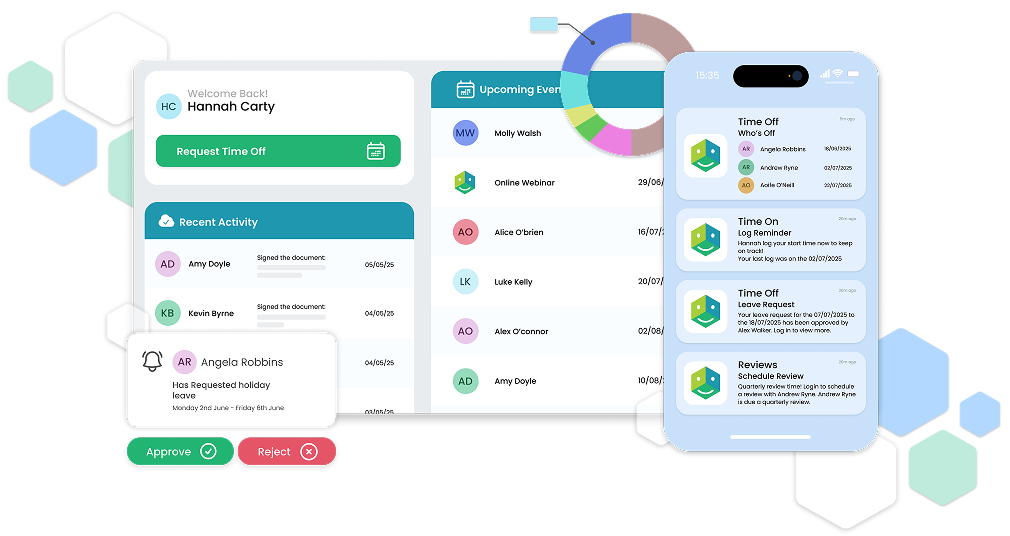The function of Human Resources has undergone a significant transformation. Once viewed as a primarily administrative department, HR has evolved into a strategic partner essential for driving business growth. In today’s dynamic environment, the success of an organisation is deeply connected to its people strategy, placing HR at the heart of innovation and long-term success.
This article explores how the role of HR has shifted, its contributions to growth, and what the future holds for this critical business function.
1. Traditional vs. Modern HR Roles
The contrast between traditional and modern HR highlights a fundamental shift in perspective.
- Traditional HR: This function was primarily administrative, focused on compliance, payroll processing, and maintaining employee records. It operated reactively, addressing issues as they arose and ensuring the organisation followed regulations.
- Modern HR: Today, HR is a proactive, strategic partner. It is involved in long-term workforce planning, shaping company culture, and aligning people-focused initiatives with overarching business objectives. The focus has moved from simple administration to strategic value creation.
This evolution means HR is no longer just about managing personnel; it is about cultivating the talent and environment needed for the business to thrive.
2. HR as a Strategic Partner
A modern HR department acts as a strategic partner to the leadership team. Its contribution is vital for sustainable growth and is demonstrated in several key areas.
- Workforce Planning: HR aligns talent acquisition with long-term business goals, ensuring the company has the right people with the right skills to meet future demands.
- Culture Building: A strong company culture is a competitive advantage. HR leads the effort to create an environment that attracts top talent, encourages high performance, and reduces employee turnover.
- Driving Engagement: Engaged employees are more productive and innovative. HR implements strategies to boost engagement, from recognition programmes to professional development opportunities.
When HR has a seat at the leadership table, it ensures that people-related decisions are integrated into the core business strategy, creating a more cohesive and successful organisation.
3. The Role of HR in Driving Innovation
Innovation is not just about technology; it is about people. HR plays a crucial role in creating an environment where new ideas can flourish.
This is achieved by:
- Encouraging Creativity: HR can design performance management systems that reward creative thinking and collaboration, enabling teams to experiment and share ideas.
- Supporting Continuous Learning: By promoting upskilling and reskilling initiatives, HR ensures the workforce remains agile and equipped to adapt to new challenges and technologies.
- Leveraging HR Technology: Automating routine administrative tasks frees up HR to focus on strategic initiatives. Tools for collaboration and communication can also break down silos and encourage a more innovative culture.
4. HR’s Impact on Employee Experience
The employee experience encompasses every interaction an employee has with the organisation, from their first interview to their exit. HR is central to shaping this journey.
Key responsibilities include:
- Creating a Positive Onboarding Process: A well-structured onboarding experience helps new hires integrate quickly and sets them up for success.
- Implementing Wellbeing Programmes: Supporting employee wellbeing and promoting a healthy work-life balance leads to higher satisfaction and retention rates.
- Building a Feedback-Driven Culture: Regular check-ins and performance discussions, facilitated by HR, create an open dialogue where employees feel heard and valued.
A positive employee experience is directly linked to higher engagement, better performance, and lower turnover, all of which contribute to business growth.
5. Data-Driven HR: The Power of Analytics
HR analytics is transforming how people-related decisions are made. By leveraging data, HR can move from intuition to insight-driven strategies.
HR analytics enables leaders to:
- Identify Trends: Analyse data on employee performance, engagement, and turnover to identify patterns and address underlying issues.
- Predict Workforce Needs: Utilise data to forecast future talent requirements, enabling more strategic recruitment and succession planning.
- Measure the ROI of HR Initiatives: Demonstrate the business impact of HR programmes, from wellness initiatives to training, and align them with financial outcomes.
6. HR’s Role in Change Management
Organisations are in a constant state of flux, whether it involves a merger, restructuring, or the adoption of new HR technology.
During periods of transition, HR supports the business by:
- Communicating with Employees: Ensuring clear, transparent, and consistent communication to reduce uncertainty and maintain morale.
- Managing Transitions: Guiding the process of mergers, acquisitions, or internal reorganisations to minimise disruption.
- Providing Training and Resources: Helping employees adapt to new systems, processes, or roles through targeted training and support.
7. Challenges for HR in Business Growth
As a business grows, HR faces a unique set of challenges that require careful management.
Common hurdles include:
- Scaling HR Processes: Manual systems that worked for a small team can become bottlenecks during expansion. Scalable HR software is crucial for efficiently managing a larger workforce.
- Balancing Compliance with Innovation: As a company grows, compliance requirements become more complex. HR must ensure adherence to regulations without stifling the innovative culture that drives growth.
- Managing a Diverse Workforce: Growth often brings a more diverse and geographically dispersed workforce. HR must develop effective strategies to manage remote teams and promote an inclusive work environment.
8. The Future of HR in Business Growth
The role of HR will continue to evolve. Emerging trends suggest an even greater strategic importance in the years to come.
Future developments include:
- Increased Use of AI and Automation: AI will help automate more HR tasks, enabling HR professionals to focus on strategic planning and employee relations.
- Greater Focus on DEI: Diversity, Equity, and Inclusion (DEI) will become even more central to HR strategy as organisations recognise its impact on innovation and performance.
- Driving Sustainability Initiatives: HR will play a key role in developing and implementing corporate social responsibility (CSR) programmes, aligning business practices with ethical and environmental goals.
Conclusion
The evolution of HR from an administrative function to a strategic driver of business growth is undeniable. By focusing on workforce planning, culture, innovation, and data-driven decision-making, HR professionals are in a unique position to shape the future of their organisations. Embracing this strategic potential and leveraging modern tools is key to making a lasting impact.
HR is no longer just a department—it’s the backbone of a thriving, innovative organisation.









